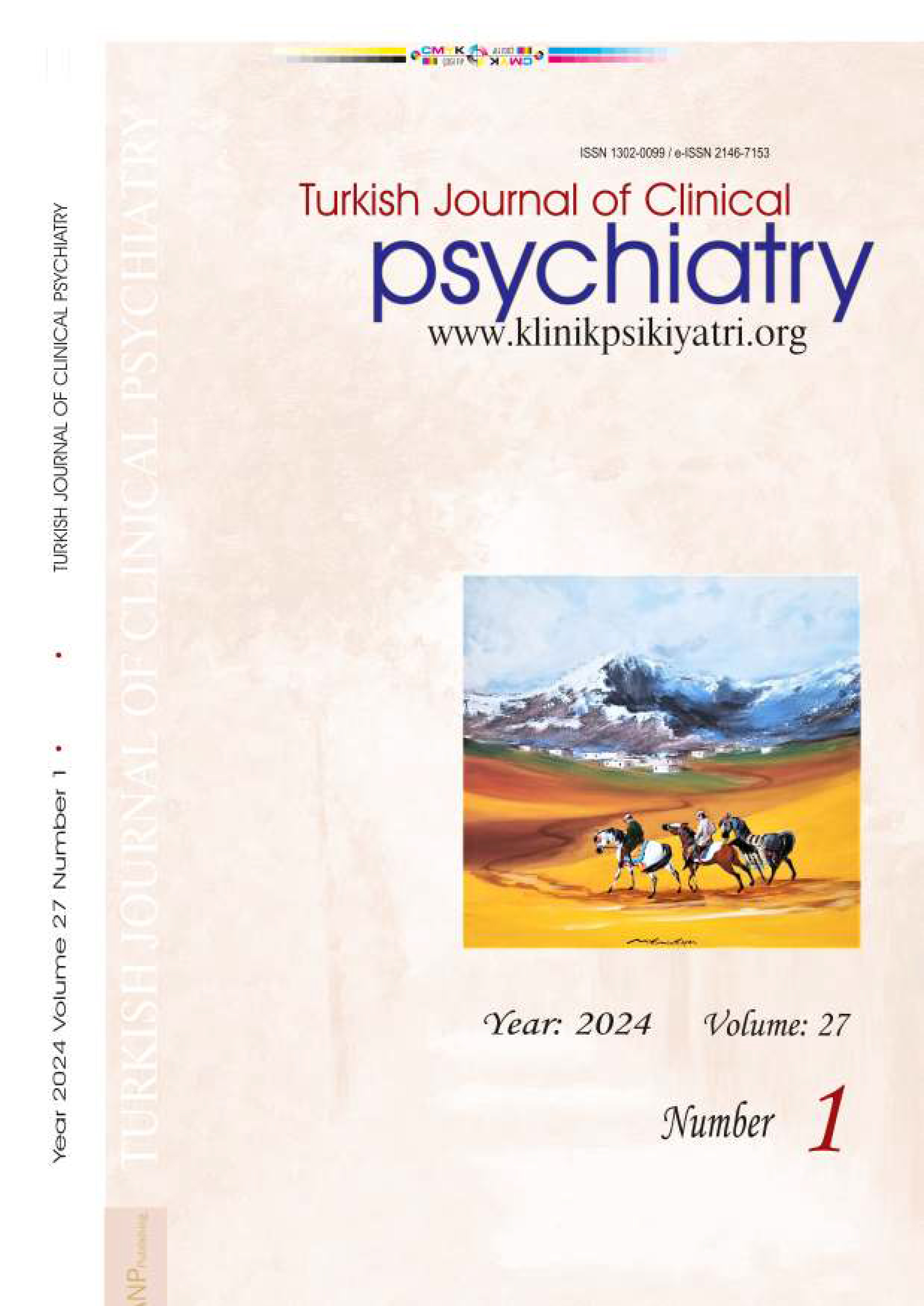
Developing an auxiliary tool for treatment of specific phobias via virtual reality technology applications: An effectiveness study (tur)
Sedat Işıklı1, Zeynel Baran1, Selçuk Aslan21Hacettepe University Department of Psychology Beytepe Ankara Turkey2Gazi University Faculty of Medicine Department of Psychiatry Beştepe Ankara Turkey
INTRODUCTION: Purpose of the study is to develop an auxiliary tool that can be used by experts working in the clinical settings for psychological support processes to adults diagnosed with simple phobia. In that realm, one another related aim is also to evaluate the effectiveness of the developed tool via behavioral and physiological measurements.
METHODS: Eleven participants diagnosed with specific phobia (7 females X ̅age=38.57, SD=8.89; 4 males X ̅age=41.75, SD=13.07) by mental health specialist were exposed to virtual reality scenarios in a systematic desensitization manner. There were 6 person with cynophobia, 2 with arachnophobia, 1 with acrophobia and 2 with claustrophobia. Each of four phobia scenario sessions consisted of diffferent number of stages to be completed. None of the participants were received any drug medication for phobia before and also during the study. In addition to physiological meaurements like galvanic skin response (GSR) and heart rate (HR), subjective units of distress scale (SUDS) measurements were also taken before and after exposure to each stage as dependent variables. To compare different phobia scenarios, minimum, maximum and peak-to-peak amplitude values of the first and last exposure to the most feared stimuli for physiological records and first and last exposure SUDS values again for the most feared stimuli were analyzed with Wilcoxon Signed Rank Test.
RESULTS: The most fear/anxiety procuding stimuli comparisons for the first (pre-test) and the last (post-test) exposures in SUDS, GSR and HR measurements indicated that there was significant decrements in post-test measurements with respect to the ones for pre-tests.
DISCUSSION AND CONCLUSION: Analyses of behavioral and physiological measurements obtained from the participants showed that the learned-fear-responses have a tendency to extinct after being exposed to the relevant stimuli virtually. Thus, virtual reality applications can be effectively usable in the treatment of specific phobias.
Özgül fobilerde sanal gerçeklik teknolojisi uygulamaları ile tedaviye yardımcı araç geliştirme: Bir etkililik çalışması (tur)
Sedat Işıklı1, Zeynel Baran1, Selçuk Aslan21Hacettepe Üniversitesi Beytepe Yerleşkesi Edebiyat Fakültesi Psikoloji Bölümü, 06800, Çankaya, Ankara2Gazi Üniversitesi Tıp Fakültesi Dahili Bilimler Ruh Sağlığı ve Hastalıkları ABD, 06500, Beştepe, Ankara
GİRİŞ ve AMAÇ: Özgül fobi tanısı almış yetişkin bireylere verilecek psikolojik destek sürecinde kullanılmak üzere alandaki uzmanların kullanabileceği yardımcı bir aracın geliştirilmesi, bu kapsamda geliştirilen cihazın etkinliğinin davranışsal ve fizyolojik ölçümlerle belirlenmesidir.
YÖNTEM ve GEREÇLER: Ruh sağlığı uzmanı tarafından özgül fobi tanısı almış ve ilaç kullanmayan 11 katılımcı (7 kadın X ̅yaş=38.57, Ss=8.89; 4 erkek X ̅yaş=41.75, Ss=13.07), fobi içeriklerine yönelik oluşturulan sanal gerçeklik senaryolarına aşamalı olarak maruz bırakılmışlardır. Maruz bırakma aşamaları sırasında galvanik deri tepkisi (GSR) ve kalp atım hızı (KAH) gibi fizyolojik ölçümlerle birlikte her aşama öncesi ve sonrasında alınan öznel sıkıntı bildirimleri bağımlı değişken ölçümü olarak alınmıştır. En çok korku/kaygı uyandıran uyarıcıya ilk ve son maruz kalma sırasında alınan öznel bildirimler (ön test-son test) ile ilk ve son maruz kalma sonrasın verilen fizyolojik tepkilere ilişkin minimum, maksimum ve tepeden tepeye genlik değerleri Wilcoxon İşaretli Sıralar Testiyle analiz edilmiştir.
BULGULAR: Öznel sıkıntı bildirimi, GSR ve KAH ölçümlerinde en korku verici uyarıcı için elde edilen ön test-son test karşılaştırmaları, son ölçümlerde anlamlı derecede bir azalmaya işaret etmektedir.
TARTIŞMA ve SONUÇ: Katılımcılardan elde edilen davranışsal ve fizyolojik ölçümlerle yapılan analizler öğrenilmiş korku tepkilerinin ilgili uyarıca sanal olarak maruz kalmaları sonrasında bir sönme eğilimine girdiğini göstermektedir. Sanal gerçeklik uygulamaları özgül fobi tedavisinde etkin bir şekilde kullanılabilir.
Corresponding Author: Sedat Işıklı, Türkiye
Manuscript Language: Turkish
(1651 downloaded)




